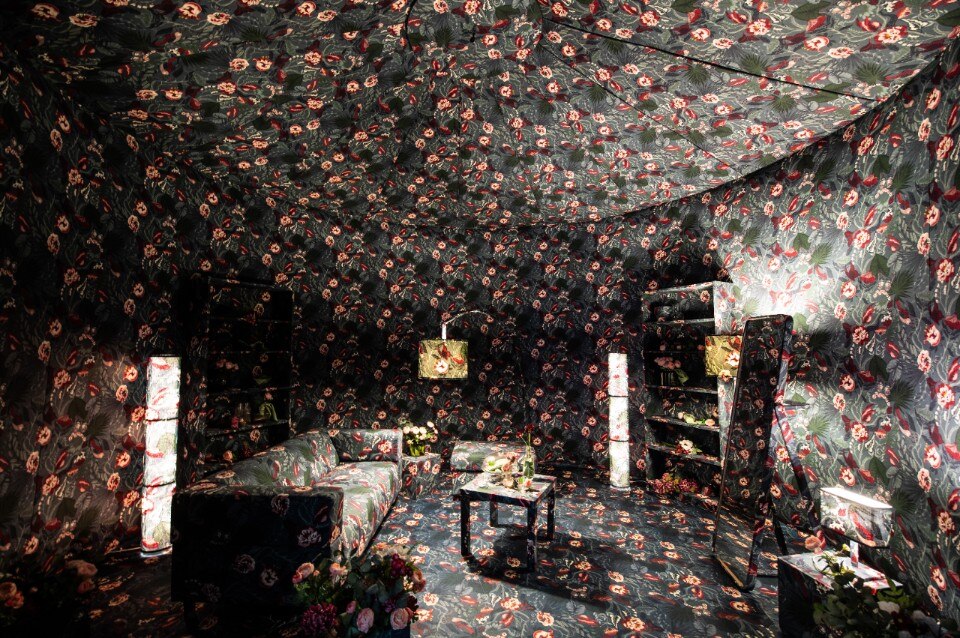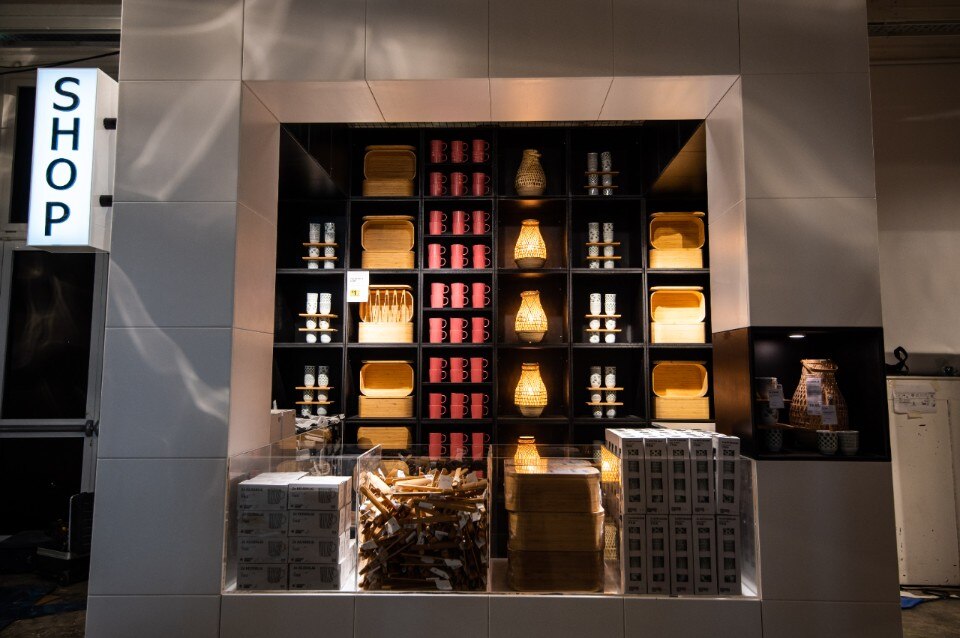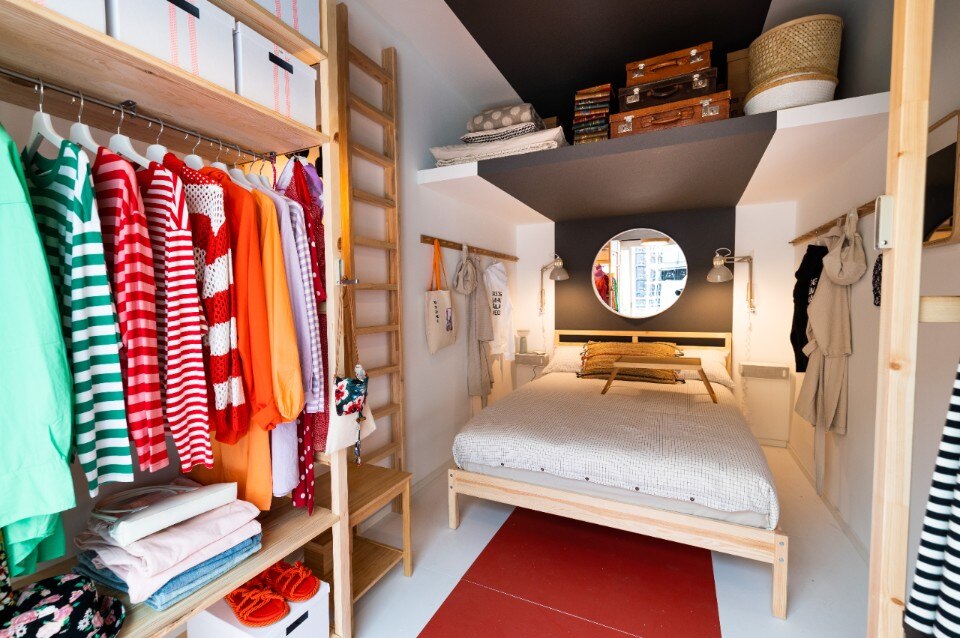On the occasion of the Fuori Salone, in the spaces of Base Milano, Ikea showcased its continuous work of democratisation of design, starting from the study on the behaviours that lead people to experience their homes in an constantly different and evolving way. It is Marcus Engman, creative director of Ingka Group, to explain the company’s latest research carried out in a period of strong uncertainty: “The house talks about us and tells us what we want to become. For us, everything revolves around people: in proposing new solutions, we try to involve them to get closer to them, learn, improve their ambitions, dreams, needs, both pragmatic and functional, starting from life situations. For this reason,” the creative director further says, “we thought of creating an exhibition that translates the Swedish concept of Ögonblick”, a term that can be translated as “moment”, but also “slice of life”.

Ögonblick – A Life at Home Exhibition, is a path of 5 installations that abstractly represent different moments of one’s life in the living space: the first home by yourself, exuberant and overwhelming, that of a yet non-consolidated couple, with boxes still to be undone, and a provocative single flat entirely covered in floral fabric. Then, there is the house of an expanding family, and there is the moment when the environment is shared with different people: it is the table to become the fulcrum of domestic life, a place for sharing and exchange.
In the spaces of Base, one can also enjoy the Life at Home Stories, a series of short documentaries that investigate domestic life in different countries of the world. They are part of a field research on the relationship between people and their domestic environment, using data annually collected in the Life at Home Report, a document that for the past 8 years has been capturing the evolution of domestic life through the direct experiences of citizens from all over the globe.

“These home visits,” explains Ergman, “aim to offer a good understanding of how the house works. We want to establish a dialogue with people, we don't care so much how many closets you have but what you do in the morning when your children have breakfast and what you need to make that moment better. We try to solve real problems ”.
In the Base courtyard, Ikea built the First Homes installation, a Milanese house inhabited by three different types of people and families. Each space, measuring 19, 23 and 35 square meters, tells the story of imaginary dwellers of the city of Milan. They range from the student with only a few square meters available to him, to the couple with needs and hobbies different from each other. A shared space, catered with seats and tables, is of course provided to socialise and share. Everything here is designed around people, who define the space they live in.
“Ours is a human-centered design”, explains Fredrika Inger, Global Range Manager of Ikea Sweden. For Ikea, the approach towards the future is always dynamic: “There has never been more uncertainty than in this historical period, but we are curious. It is a time full of challenges, the home has been a very important place but now it is time to open up again, there is a terrible war in Ukraine with its impact on our lives and on our purchases. How can we handle all of this? The answer is to be curious, always, and to understand how to respond to people on an emotional level”.

For Inger, Ikea needs to rethink its role and understand how people can handle difficulties. "The recipe for democratic design can come to the rescue, and this precious concept must be extended to a multifunctional approach, with a sustainability perspective, increasingly circular, but at an affordable price". Once the cycle of furniture is complete, they must therefore be completely recycled. Think, for example, of the famous Billy bookcases which have to be disposed of entirely, as well as the mattresses, which normally have a huge footprint and always end up in landfills.
A room in First Homes, for instance, is made with “recycled”, reconditioned Ikea furniture, adapted, reused and with a new colourway so as to give it a renovated function.
The very recent Atelier 100, an exploration project between the Ingka group and H&M, conveys such a desire to join forces to take a step further, towards a different production cycle.
Camilla Hernikkson, H&M’s Global Brand Innovation Manager, declares its goal: to seek creative talent and new ways of establishing a local presence. Just last week the first Atelier was inaugurated in London. It involved 20 creatives living within a radius of 100 km from the headquarters: “The idea is to establish a creative hub, to design new things for more and more different people but with a local supply, where we discover interesting materials and manufacturers that we had not thought of, and who can foster new ideas. By October we will get the first results back: the goal is to work quickly. The synergy with local producers is a challenge, it makes us question ourselves”, explains Hernikkson.

During the Festival it will be possible to attend in-depth talks on products and meet designers, such as Sabine Marcelis and Marimekko, so as to better understand the efforts in the field of circularity and sustainability. On Thursday 9th, the legacy of the brand's past will be explored through the unveiling of the Museum Throwback, where the origins of the group are preserved but we are also made to simultaneously reflect on the future.
Ikea pragmatically reaffirms its values, also thinking about what will come after the Salone: the scenes and furniture will be donated to associations active in the Milan area to “help make those in need feel at home”. A broader concept of sustainability is embraced, not only material-wise but of “sustainability on an emotional level”. In the words of the creative director, this is “the greatest challenge, this is the future. Integrating bigger and bigger things”.









